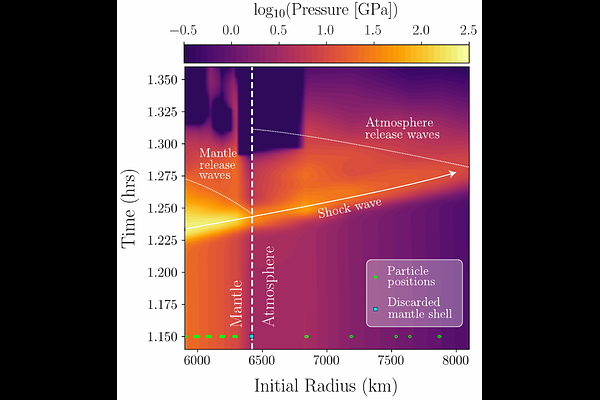Atmospheric loss during giant impacts: mechanisms and scaling of near- and far-field loss

Atmospheric loss during giant impacts: mechanisms and scaling of near- and far-field loss
Matthew J. Roche, Simon J. Lock, Jingyao Dou, Philip J. Carter, Zoë M. Leinhardt
AbstractThe primary epoch of planetary accretion concludes with giant impacts - highly energetic collisions between proto-planets that can play a key role in shaping a planet's inventory of volatile elements. Previous work has shown that single giant impacts have the potential to eject a significant amount of a planet's atmosphere but that the efficiency of atmospheric loss depends strongly on the impact parameters and atmospheric properties. Fully quantifying the role of giant impacts in planetary volatile evolution requires a more complete understanding of the mechanisms driving loss during impacts. Here, we use a suite of 3D smoothed particle hydrodynamics simulations to show that loss in giant impacts is controlled primarily by ejecta plumes near the impact site and breakout of the impact shock in the far field, with the efficiency of the latter well approximated by 1D ground-kick calculations. The relative contributions of each mechanism to loss changes drastically with varying impact parameters. By considering the near and far field separately, we present a scaling law that precisely approximates (to within an average of $\sim$3%) loss from 0.35 to 5.0 Earth mass planets with 5% mass fraction H$_2$-He atmospheres for any combination of impactor mass, impact velocity, and angle. Finally, we apply our scaling law to the results of $N$-body simulations for different solar system formation scenarios. We find that while individual impacts rarely cause significant loss ($>$10%) from roughly Earth-mass planets with such massive primary atmospheres, the cumulative effect of multiple impacts can be substantial (40-70% loss).